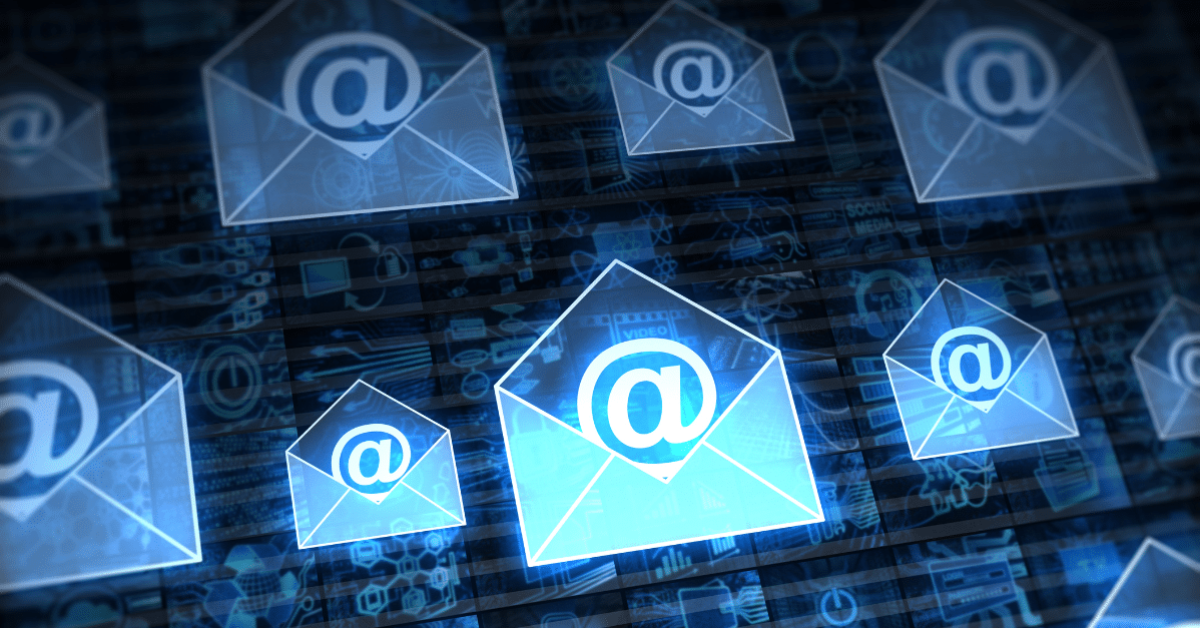It’s Monday morning. You’re sipping coffee, skimming through your inbox, and a message from your “bank” pops up asking you to confirm account details. You’re distracted, running late, and you click without thinking. In just a few seconds, attackers may have the keys to your business.
That’s the reality of email security in 2025. Email is where business begins — where trust is built, contracts are signed, and new opportunities arrive. But it’s also where 91% of targeted cyberattacks start.
What’s Really at Risk Inside Your Inbox
For small and midsized businesses (SMBs), the inbox has become the new battleground.
Think about what lives there:
- Signed contracts
- Employee data
- Sensitive client information
It’s a goldmine for attackers — and protecting it is no longer just an IT issue. It’s about finances, reputation, and keeping your business running without disruption.
Further Reading: 2025 Cyberthreat Report, (Sendmarc)
Why Email Security Can’t Be Ignored
Too many SMBs still treat email security like junk mail: something the spam filter can handle. But modern attacks are wolves in sheep’s clothing — smart, convincing, and powered by AI. Relying on old defenses is like leaving your doors locked but the windows wide open.
The consequences go far beyond IT:
- Heavy financial losses from fraud or ransomware
- Erosion of trust with clients and partners
- Communication breakdowns that stall opportunities
- Operational disruption that halts productivity
- Compliance risks that bring legal headaches
And here’s the kicker: prevention costs a fraction of recovery. Acting now is always cheaper than cleaning up later.
Further Reading: Get Prepared for Cybersecurity Awareness Month 2025
The Top Email Security Trends of 2025
So, what exactly is happening in inboxes this year? Here are the trends SMBs need to understand — in plain language.
1. Ransomware & Extortion Attacks
Ransomware is basically a digital hostage situation. Hackers lock up your files and demand money to release them. Over 50% of ransomware attacks in Q3 were delivered by email, making it the #1 delivery method. One wrong click could freeze your entire business.
2. Human Manipulation & Deepfake Deception
It’s not just typo-filled phishing emails anymore. Attackers now use AI to craft emails, voice messages, and even video calls that look and sound real. 68% of breaches involve human error, and deepfakes take that manipulation to a new level. Imagine getting what sounds like a call from your CEO asking you to authorize a payment. Would you be confident it wasn’t real?
3. Stolen Credentials & Insider Threats
Nearly 88% of web app breaches involve stolen credentials. Once a hacker gets a username and password, they can waltz through your systems like an insider. And insiders — whether careless or malicious — are behind a growing number of breaches.
4. Supply Chain & Third-Party Risks
Your defenses are only as strong as your weakest link. 15% of breaches start with compromised vendors or partners. Even if you’ve locked your own digital doors, you’re still at risk if a partner leaves theirs wide open.
5. Shadow IT & “Bring Your Own AI”
AI is transforming SMBs, helping small teams scale and automate work. But here’s the problem: 80% of SMB employees admit to using personal AI tools at work. That’s like employees secretly using personal credit cards for business expenses. It may feel convenient, but without oversight, you lose control — and expose sensitive data.
Further Reading: AI Security and Privacy Checklist
What SMBs Can Do to Stay Ahead
Here’s the good news: SMBs aren’t powerless. With the right strategy, you can stay ahead of attackers and keep your business moving forward.
- Implement strong email authentication:
Configure SPF and DKIM, and enforce DMARC at “reject.” This blocks fake emails that appear to come from your domain before they ever reach your inbox. - Prepare for AI-powered threats:
Traditional filters can’t keep up. AI-powered detection tools spot suspicious activity in real time, stopping attacks before they spread. - Secure your third-party ecosystem:
Don’t just trust your vendors — verify them. Regularly assess and monitor their cybersecurity practices. - Govern technology use:
Create clear policies for software and AI tools. Shadow IT and “shadow AI” can create blind spots that attackers love to exploit. (Need help? Ask us for a sample policy and AI readiness checklist.) - Train and empower your team:
Awareness matters. Phishing simulations and clear reporting processes give employees confidence to act quickly. But remember: training alone isn’t enough. Even the sharpest employee can be fooled by an AI-crafted scam — so strong defenses must back them up.
Why Stronger First-Line Protection Matters
As Keith Thompson, Co-Founder and CTO of Sendmarc, explains:
"Even trained security professionals can’t distinguish AI-generated attacks from legitimate communications when adversaries deploy LLMs trained on actual corporate data."
Keith Thompson
That’s why the old idea of a “human firewall” no longer works. Employees can’t be expected to spot every threat. What businesses need today is advanced, AI-driven protection that acts as a digital bodyguard for your inbox.
With the right defenses, you gain:
- Real-time protection against phishing and ransomware
- Safeguards against impersonation and business email compromise (BEC)
- Seamless integration with Microsoft and Google
- Clear threat visibility so leaders can respond fast
Stronger Email Security Starts Here
Cybercriminals aren’t slowing down, but neither is innovation in defense. With the right tools and policies, SMBs can level the playing field. The inbox doesn’t have to be your weakest link — it can become one of your strongest defenses.
At Just Solutions Inc., we help SMBs secure their communication, protect trust, and keep opportunities flowing. Don’t wait until your inbox becomes the front door for an attack.
Ready to assess your email security risks? Contact the experts at Just Solutions Inc. today to secure your inbox and safeguard your business.

